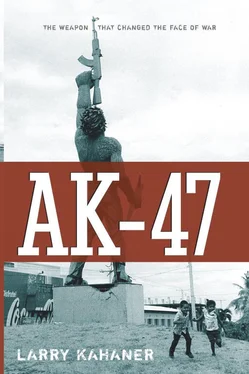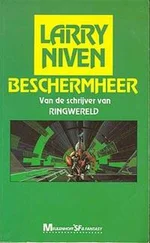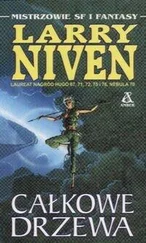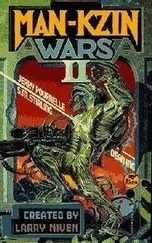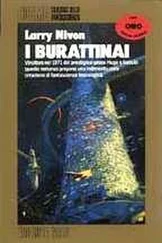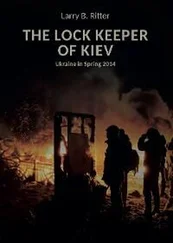Larry Kahaner - AK-47
Здесь есть возможность читать онлайн «Larry Kahaner - AK-47» весь текст электронной книги совершенно бесплатно (целиком полную версию без сокращений). В некоторых случаях можно слушать аудио, скачать через торрент в формате fb2 и присутствует краткое содержание. Город: Hoboken, Год выпуска: 2007, ISBN: 2007, Издательство: John Wiley & Sons, Inc., Жанр: История, military_history, на английском языке. Описание произведения, (предисловие) а так же отзывы посетителей доступны на портале библиотеки ЛибКат.
- Название:AK-47
- Автор:
- Издательство:John Wiley & Sons, Inc.
- Жанр:
- Год:2007
- Город:Hoboken
- ISBN:9780470315668
- Рейтинг книги:3 / 5. Голосов: 1
-
Избранное:Добавить в избранное
- Отзывы:
-
Ваша оценка:
- 60
- 1
- 2
- 3
- 4
- 5
AK-47: краткое содержание, описание и аннотация
Предлагаем к чтению аннотацию, описание, краткое содержание или предисловие (зависит от того, что написал сам автор книги «AK-47»). Если вы не нашли необходимую информацию о книге — напишите в комментариях, мы постараемся отыскать её.
AK-47 — читать онлайн бесплатно полную книгу (весь текст) целиком
Ниже представлен текст книги, разбитый по страницам. Система сохранения места последней прочитанной страницы, позволяет с удобством читать онлайн бесплатно книгу «AK-47», без необходимости каждый раз заново искать на чём Вы остановились. Поставьте закладку, и сможете в любой момент перейти на страницу, на которой закончили чтение.
Интервал:
Закладка:
The mujahideen were still terrified of the new AK and its “poison bullet,” and pleaded for these arms from the United States to achieve parity with the Soviet invaders. The CIA’s Hart finally relented and ordered hundreds of thousands of AKs, mainly from China, where production of the Soviet weapon was booming. China and the Soviet Union had had an ideological falling-out during the 1960s, and the Chinese were eager to use the Soviets’ own weapon against them in the Afghan conflict. (China and Afghanistan also share a forty-seven-mile border.) Not only did they sell the 7.62mm AK called the Type 56, but they had introduced in 1981 the 5.56mm Type 81, an AK model that used the same 5.56mm round as the M-16, another poke in the eye to the Soviets. A year later, China brought on the market their 5.45mm Type 81, which was a direct competitor to the new Soviet assault rifle. AKs and their variants also poured in from Poland, where dissident army officers sold Soviet weapons to the CIA. Other nations such as Egypt and Turkey sold older Soviet and other weapons to the CIA for delivery to Afghan guerrillas.
The CIA favored Soviet weapons because of their reliability, low cost, and availability. In addition, Soviet weapons in the hands of the mujahideen would not appear to be U.S.-supplied, thus giving the CIA deniability. As history would later show, Hart’s decision to buy AKs for the mujahideen may have been the most important single contribution to the spread of the weapon.
So many weapons, millions by some estimates, were passing through Pakistan that no one could keep an accurate count. The same with money; nobody could keep track of all the secret deals, payoffs, and bribes that surrounded the CIA’s covert operation. Years later, in congressional testimony, CIA officials estimated that by 1984, $200 million had been sent to the mujahideen and that by 1988 the amount reached $2 billion through CIA channels alone. It had turned into the largest covert shipment of arms, and supplies, and money by the CIA since the Vietnam War.
The covert pipeline managed by the CIA usually entered Pakistan through Islamabad or Karachi. From there, arms went to staging areas in the towns of Quetta and Peshawar near the Afghan border, then into Afghanistan.
Islamabad, the center of CIA activity in Pakistan, became an arms bazaar, a wide-open and sometimes lawless town awash in weapons, where quick money could be made easily. While most of the funds destined for the mujahideen reached them, much money and many weapons went astray. In payment for their help, the Pakistani army and the Inter-Services Intelligence (ISI), that country’s CIA counterpart, took a cut of the money and arms flowing through their country. AKs were sold to those inside Pakistan, including thugs, criminal gangs, and citizens who wanted protection in a region that was becoming dangerous. Many weapons also found their way to Islamic revolutionaries in Iran.
The mujahideen themselves sold some AKs and used the money for medical supplies and food. They also stockpiled weapons and ammunition to be used after the Soviets left. Convoys of mujahideen supplies from Pakistan needed protection from the Soviets and civilian gangs who roamed the no-man’s-land in the border area of Tora Bora. Private truckers hauling for the mujahideen were given AKs to protect their loads. These drivers, who were paid by the mujahideen or the CIA to deliver weapons to Afghanistan’s interior, would return to Pakistan with empty trucks. To help defray their costs, they sometimes hauled heroin and other drugs produced in Afghanistan. These convoys often paid gangs, drug kingpins, or local strongmen for protection. Their weapon of choice was the AK because of its low cost and reliability. Drug dealers and their gangs, who became an integral part of the arms pipeline, also chose the AK. The name Kalashnikov became well known in the region as people began to call their favorite gun by the inventor’s name.
As more and more AKs flooded the region, street prices dropped, and even more people bought them on the black market. Indeed, one of the ways in which the CIA hoped to monitor the arms shipments and prevent wholesale weapons skimming by the Pakistanis was to keep an eye on prices. If they dropped too far and too quickly it would be a sign of dumping on the market. Later, the ISI was found to be skimming, including several instances involving sending weapons offshore and then back to Pakistan for sale, as well as selling back the CIA its own weapons.
AKs were seen on the streets of most Pakistani and Afghan towns as ordinary citizens armed themselves for personal protection in a region now abounding in small arms. The simple-to-use and easy-to-maintain AK—both older and new models—became the most ubiquitous weapon in the region, and all versions coexisted side by side. To avoid confusion, the Soviets cleverly placed a long smooth groove in the buttstock of the 5.45mm model so that even in the dark soldiers could tell which weapon they were holding and feed it the correct ammunition.
The newly delivered AKs offered the mujahideen an opportunity to better their tactics. One successful technique was to start a landslide on a mountain route to block it before a convoy arrived. To make it look like a natural occurrence and not a deliberate ploy, they used small rocks instead of huge boulders. The convoy would stop, and when Soviet soldiers got out to clear the roads, the mujahideen would pounce, AKs in hand, and open up at close range, spending hundreds of rounds in minutes. The guerrillas would pick up Soviet weapons and whatever else they could carry and scurry back into the mountains. Although the Soviets still had greater long-range firepower and air support, their troops quickly became demoralized at the mujahideen’s hit-and-run tactics that turned their own assault weapons against them. To be sure, the AK was not the only weapon used successfully by the mujahideen. The CIA also supplied Stinger Human-Portable Air-Defense System, or MANPAD, missiles. These shoulder-fired guided missiles were effective against low-flying Soviet helicopters, although they were not supplied until later in 1986 during the war’s peak years. The AK remained the most used weapon in the region.
Despite the graft, corruption, and skimming that occurred, the CIA-run arms pipeline was effective. During the course of the war, Afghanistan became the world’s largest arms recipient in relation to the size of its population, according to the United Nations. With help from the ISI, the United States delivered perhaps as many as four hundred thousand AKs to the mujahideen. The ISI had access to an additional three million Kalashnikovs from pipeline operations, some of which made it to the rebels and some of which were sold on the black market. Hundreds of thousands more AKs entered the area from other countries now that the pipeline infrastructure had been established.
By 1985, the war was reaching a stalemate despite the large number of Soviet ground troops in Afghanistan, estimated to have peaked at 100,000 men. With other troops and support, that number probably reached 175,000.
Regardless of the large troop numbers, the Soviets could not beat the mujahideen. They found themselves spending 85 percent of their resources guarding cities, airfields, and supply depots, which left only 15 percent to chase after the mujahideen. The massive CIA/ISI arms pipeline kept the rebels well stocked, and more than half of all Soviet soldiers at some point were hospitalized for diseases such as cholera and hepatitis. In addition, although the Soviet government kept most of the casualty information hidden from the public and put a positive spin on the conflict, negative reports began to filter back. Soviet citizens grew weary of what was becoming a no-win war.
The Soviet Politburo was little help in formulating an end to the war. During the conflict, the Soviet Union lost three leaders in quick succession to illness and death—Leonid Brezhnev, who had begun the war, Konstantin Chernenko, and then Yuri Andropov—and it seemed as if no one had the energy to move the process along until Mikhail Gorbachev came to power in 1985. Wanting to end the war with a decisive victory, Gorbachev ordered massive attacks, but after several bloody battles, including one particularly brutal engagement at Jalalabad, the Soviet leader sought a negotiated way out of the morass.
Читать дальшеИнтервал:
Закладка:
Похожие книги на «AK-47»
Представляем Вашему вниманию похожие книги на «AK-47» списком для выбора. Мы отобрали схожую по названию и смыслу литературу в надежде предоставить читателям больше вариантов отыскать новые, интересные, ещё непрочитанные произведения.
Обсуждение, отзывы о книге «AK-47» и просто собственные мнения читателей. Оставьте ваши комментарии, напишите, что Вы думаете о произведении, его смысле или главных героях. Укажите что конкретно понравилось, а что нет, и почему Вы так считаете.
